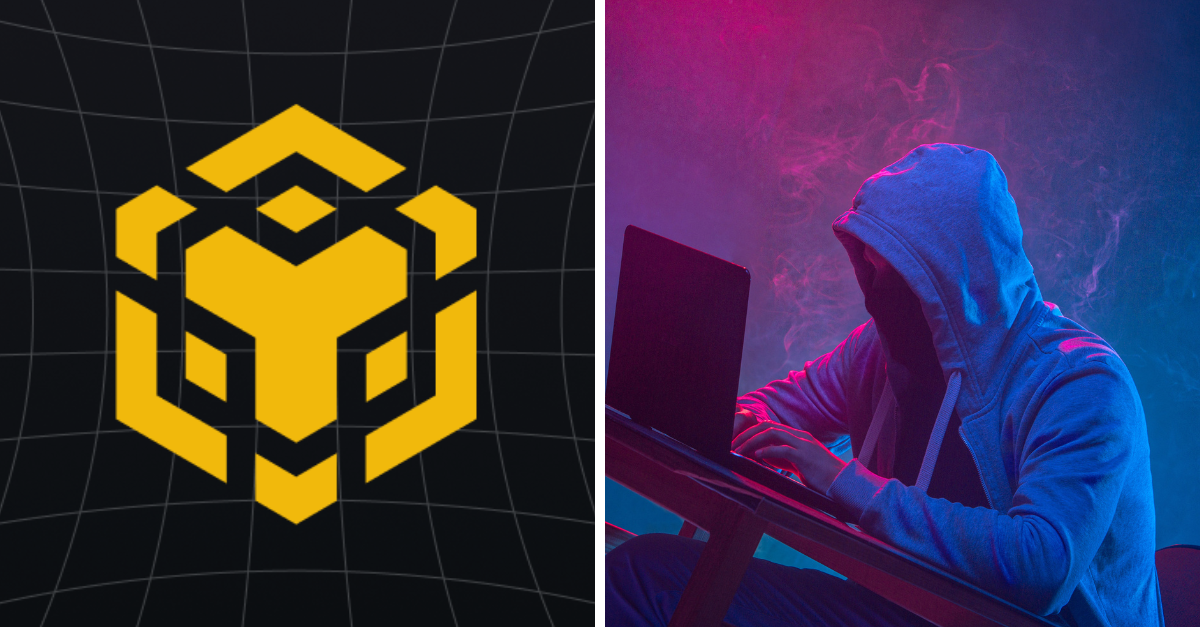Babbitt Site | Telecom Industry Blockchain Exploration at a Glance, 3 Major Operators Unlock 8 Application Cases
On December 19, a special series of "Intelligent + Academy" blockchain series China Internet Association training jointly organized by China Academy of Information and Communications Technology, China Internet Association and Beijing University of Aeronautics and Astronautics was held in Beijing. Liang Wei, the head of China Telecom's blockchain business R & D, shared the theme of "Blockchain Exploration in the Telecommunications Industry". He explained why the telecommunications industry needs blockchain, and gave eight practical cases. He also introduced the blockchain layout of Telecom, China Unicom, Mobile, ZTE, Huawei, and Inspur.
The following is a compilation of Liang Wei's live sharing content, organized and released by Babbitt.
We are now in the 5G era. In the 3G / 4G era, smartphones are the new organs of human beings. In the 5G / 6G era, everything has a digital relationship, and it exists as a digital twin in the real world. The former Vice President of the United States put forward the concept of "information superhighway". Human digital civilization has continuously developed along with the evolution of information technology.
When we talk about blockchain, it is best to talk about it in the context of the "digital economy". This concept was first proposed in 1995 and became the new main line of global economic development. The "G20 Digital Economy Development and Cooperation Initiative" is defined as: "The digital economy refers to the use of digital knowledge and information as key production factors, modern information networks as important carriers, and the effective use of information and communication technologies as efficiency improvements and economics. A series of economic activities that are an important driving force for structural optimization. "The new economic model is different from the traditional economic model. For example, there is a science and technology driving force behind the" Double 11 ". Didi Taxi also has the ability to explore data and reduce carbon emissions; Bitcoin is a self-organizing network maintained by 9981 nodes, and we don't even know who Satoshi Nakamoto is.
- Blockchain supervision has a major event in one day
- Double spend attempts on the BCH network are frequent, and about 10% of double spend transactions are confirmed
- Zhu Jiaming: Wall Street, Silicon Valley, WTO and IMF are declining, and hard technology has developed into a direct promoter
Under the framework of fusion technology, if 5G is the throttle, then blockchain technology may be the brake. It will enable large-scale collaboration of value transfer, which must be slowed down. This is my personal opinion. We talk about fusion technology, such as the integration of 5G, blockchain, and the Internet of Things. This is an important iron triangle fusion. The triangular structure is the most stable, each corner is an independent technology, and the enhancement of each corner will affect the other two corners. "5G + blockchain" is conducive to the realization of the reversal of the Internet of Everything. "5G + Internet of Things" can break through industrial applications. "Blockchain + Internet of Things" can bring the next sharing economy. "5G + Blockchain + Artificial Intelligence" It is also spawning new business models.
Why do telecom operators do blockchain?
Why do telecom operators do blockchain? Teacher Wu Jun said that the world is divided, and that the network world was the first to be "coupled," and circuits exchanged with each other. But now a high data wall has been established, and Internet companies have monopolized data resources to form oligarchs. In the next stage, the value internet of blockchain will bring about the stage of "dividing". The opportunities of the digital economy are very important.
The communications industry makes blockchains. At the bottom is a wide range of infrastructure, including network communication storage calculations. The top is a large number of users that provide data exchange. The top is the government and enterprise resources and application scenarios.
There are two famous projects in China's telecommunication industry blockchain research and development:
The first project is BSN, initiated by China UnionPay and China Mobile, and more enterprise alliances are now joining. The future "inter-chain network" is to help modernize the national governance system and build a blockchain infrastructure across public networks, regions, and institutions. Node deployments in 55 cities have been completed.
The second project is a 5G cooperative economy, because the energy consumption of a base station in the 5G phase is three times that of 4G, and the construction cost of the operator is very high. Use blockchain technology to optimize the complex business processes of 5G network infrastructure during co-construction and sharing, support bidding and matching of co-constructed resources, virtual quotient-oriented resource leasing, service monitoring, clean calculation and other functions. It is expected to be for telecommunications China Unicom saved 320 billion yuan.
Typical application scenarios in the telecommunications industry
The typical application scenarios of the blockchain in the telecommunications industry are divided into eight categories, including: telecommunications equipment management, dynamic spectrum management and sharing, digital identity authentication, international roaming settlement, data circulation and sharing, Internet of things, cloud-network convergence, and multiple access Edge computing. Let me introduce them one by one.
Scenario 1. Telecommunication equipment management: There are many telecommunications equipment, many types, many manufacturers, and many batches, forming a transparent and transparent management from the bottom to the bottom. At present, the technologies of automatic collection, trusted storage, record tracing, and intelligent sub-process of the number of inspections are incomplete. We have also done a lot of on-chain construction, automation construction stages, and intelligent construction.
Scenario 2. Dynamic spectrum management and sharing: If static management is adopted, some spectrum utilization rates are relatively low. The use of blockchain for dynamic spectrum management and sharing is an important scenario for the communications industry. The user of each spectrum can act as a node, determine the dynamic spectrum sharing mechanism through smart contracts on the chain, and implement billing and settlement based on the sharing mechanism. This is an important application scenario, published by the International Standards Committee.
Scenario 3. Digital identity authentication: Digital identity authentication is divided into two types: personal and device. The blockchain can unify user authentication and protection operators, use its own real-name authentication user database to form an identity authentication alliance chain, and attract third-party companies to join. Using algorithms to establish a unique digital identity for each user, combined with blockchain technology to ensure that digital identity is not tampered with and authorized for use. Device-based digital identity authentication. The traditional PKI technology centralized certificate application and query is changed to distributed. The device generates certificates by itself. Blockchain nodes use smart contracts to verify and write certificates. Between device vendors and operators Build trust.
Scenario 4. International roaming settlement: This is a scenario where multiple parties participate and is more suitable for blockchain. Because multi-party participation is prone to complaints, disputes, and disputes, the blockchain just solves this. Each participating operator uses its own contract documents to make smart contracts, which increases transparency and automation. Now some manufacturers, such as European operators and Asian operators, are doing roaming settlement based on blockchain. Can be shared by multiple parties.
Scenario 5. Internet of Things application scenario: The blockchain is not yet a sharing economy. In the future, we can imagine "blockchain + Internet of Things" to enable everything to be truly shared. We used to say "Internet +", and now we don't talk about Internet thinking anymore, because it has been closely integrated with all walks of life. Now is the time to talk about blockchain thinking. I think that after 5 years, everyone will not talk about blockchain thinking anymore, because at that time, the blockchain has also been closely integrated with all walks of life. No centralized system can support massive connections of things, and it needs a blockchain to do it.
Scenario 6. Cloud-network integration application scenario: cross-network docking, cloud-network integration, which is also more suitable for blockchain technology.
Scenario 7. Multi-access edge computing: Blockchain provides edge computing power. "MEC + blockchain" can realize the sharing of storage computing power, and use various idle resources to form blockchain nodes to provide resources. The idea is similar, contributing idle bandwidth and resources.
Current status of domestic and international telecommunications field
Let's take a look at the current status of the deployment of blockchain in the telecommunications field at home and abroad. China Telecom launched the first ITU-T international standard for blockchain, and also explored and practiced in the traceability of agricultural products, supply chain finance, and blockchain SIM cards. China Mobile is based on security standards, while focusing on the basics of PKI security. Facilities, international roaming, please settle for demonstration applications, and participated in the launch of the blockchain service network BSN; China Unicom has developed a patent standard strength, the number of patent applications has leapt to second place, and empowered Woyun BaaS, big data exchange and other traditional Business, proposed the construction of 5G chain network.
ZTE launched the uSmartInsight blockchain solution at the China International Big Data Industry Expo to provide a comprehensive and reliable government information system integration and sharing solution for practicing "Internet + government"; Inspur Group launched the first domestic blockchain-based technology Quality improvement service platform——quality chain; Based on years of accumulated core technologies such as distributed parallel computing, PaaS, data management, and security encryption, Huawei has launched an enterprise-grade blockchain cloud service product BaaS platform.
AT & T in the United States provides historical maps of blockchain-based social media to create a blockchain industry solution suite. The COLT operator and the Hong Kong operator PCCW complete the POC, making batch sales of voice assimilation time and settlement between operators more efficient and secure.
Telecom's 3 self-developed systems
Here are three systems we developed ourselves.

The first is a trusted electronic bidding system based on blockchain. Electronic bidding is a typical multi-party collaboration scenario. In this process, how to ensure the transparency and traceability of information, and how to achieve openness, fairness, and justice, it is very suitable for using blockchain. At present, this system will hash key bidding, bidding, bid opening and evaluation data to control the bid opening time, control credibility and transparency. There are already 760 projects and 1883 bidding projects on the platform.

The second is a clearing and settlement platform based on the blockchain. What we did in Jiangsu, combined with stores, had about 2.3 million transactions on the chain. The value-added services used in Fujian are related to value-added services, with bills around 50,000 and 2.87 million transactions on the chain.

The third is the "safe entrance" to the value Internet of China Telecom in the 5G era-SIM cards. There is SEED in the phone, which is an extension of the private key seed. In the future, you will be the master of your data. Medical data will be signed and authorized with a private key. You can also earn money by contributing data. An important player is the blockchain SIM card. We put ECC and AES on the SIM card, which will improve the performance and signature speed better. It is not currently sold to the C-side, but mainly to B-side customers.
According to Research and Markets data, the output value of blockchain technology in the telecommunications field will surge from USD 4.66 million in 2018 to USD 993.8 billion in 2023. The characteristics of blockchain decentralization, tamper resistance, and multi-party consensus mechanism determine Blockchain has important value in solving the telecommunications industry cooperation, which requires multiple parties to make joint decisions and establish mutual trust issues, optimize cooperation between operators and with upstream and downstream industry chains. 5G technology can accelerate the implementation of blockchain applications. Blockchain technology will also provide new ideas for 5G security and privacy, lay the foundation for trust in the value transfer in the 5G era, and help all connected devices collaborate.
We will continue to update Blocking; if you have any questions or suggestions, please contact us!
Was this article helpful?
93 out of 132 found this helpful
Related articles
- Is the integrated CBDC the third type of digital currency in the central bank?
- Explore ETH 2.0: How is cross-chip communication handled?
- Introduction to Blockchain | How does the alliance chain work, and what are the advantages and disadvantages?
- Ripple completes $ 200 million Series C financing, valuation reaches $ 10 billion
- French financial market regulator approves first ICO application after updating rules
- Thailand will launch blockchain electronic visa application to improve the security and speed of visa applications
- Ernst & Young report: 75% of surveyed companies intend to use the public chain, interoperability is the core issue of the license chain






